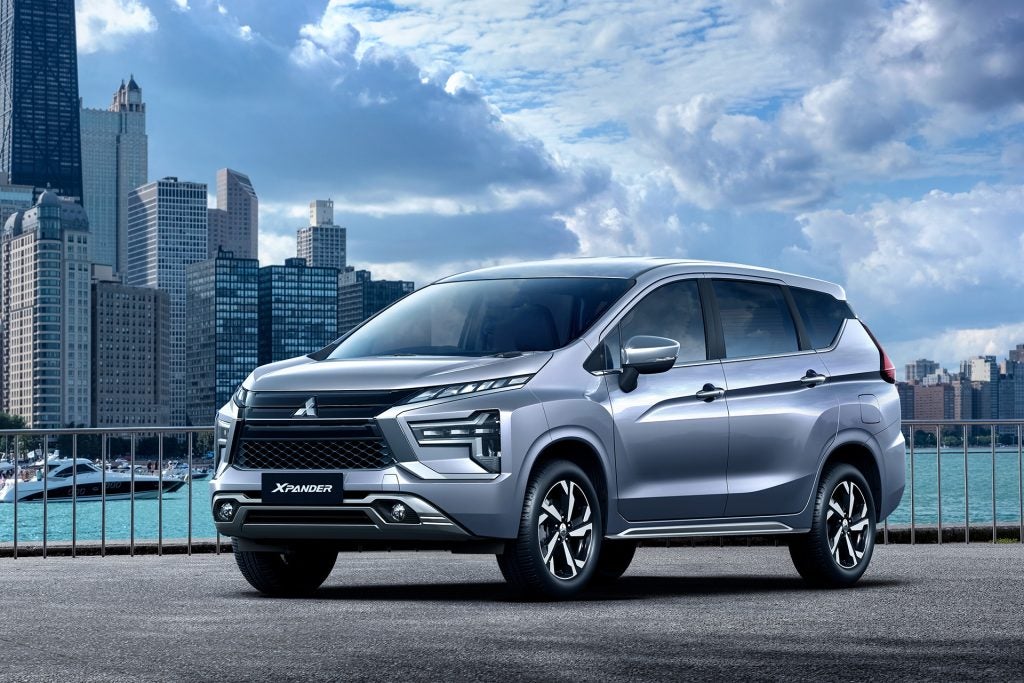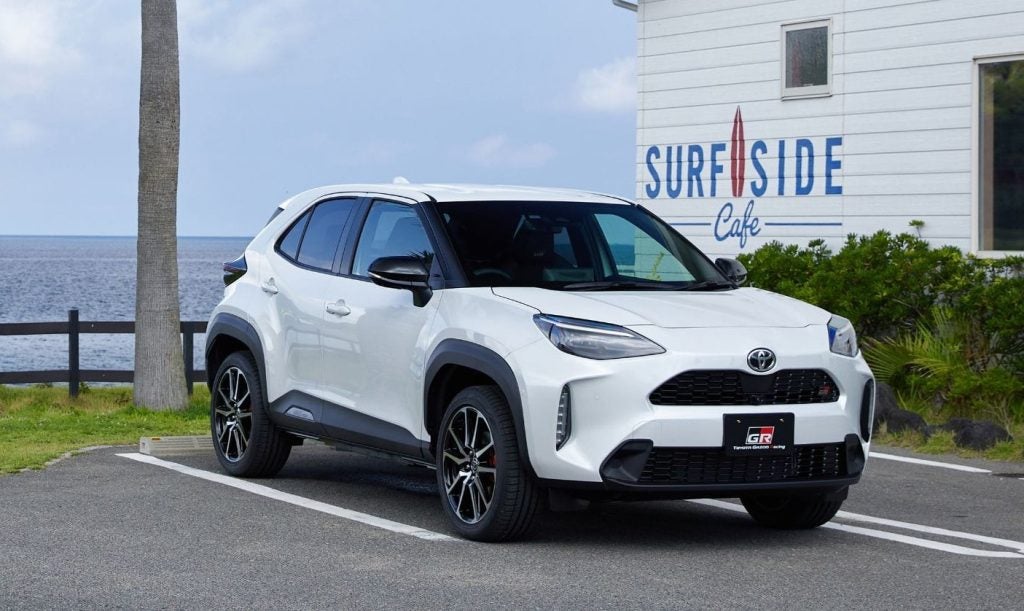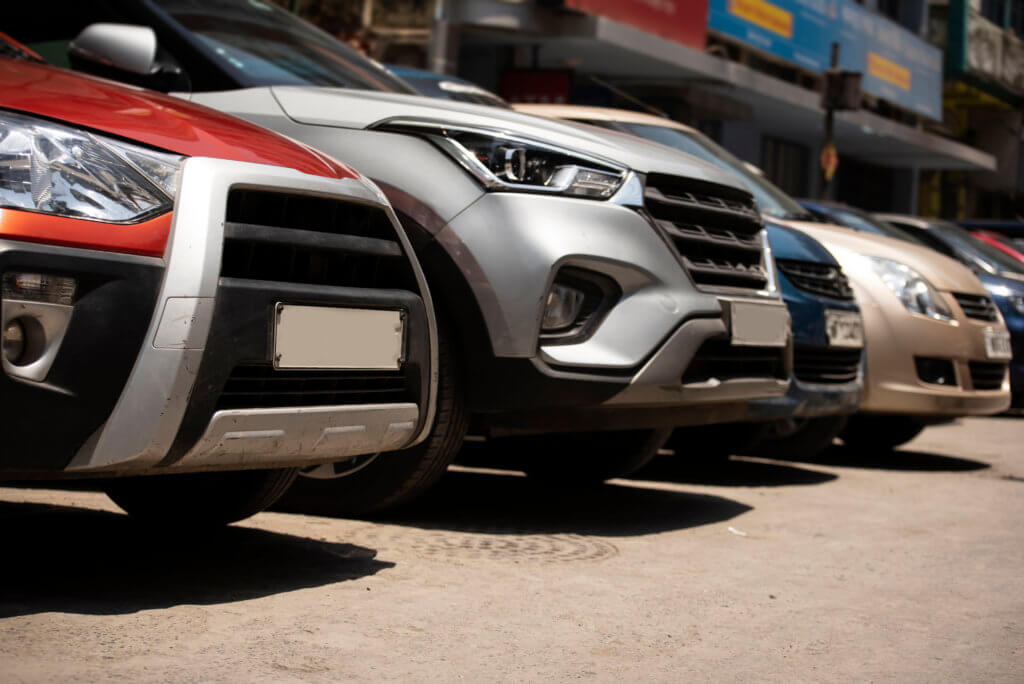 Japan’s vehicle market saw another year of barely perceptible growth in 2003, with overall volumes rising by 0.6% – in line with the country’s fundamentally lacklustre economic environment. But some sectors of the market saw substantial growth. Freight trucks looked lively, driven by tighter emissions rules. Improving business sentiment and some important new models boosted demand for executive and luxury cars. Tony Pugliese reports.
Japan’s vehicle market saw another year of barely perceptible growth in 2003, with overall volumes rising by 0.6% – in line with the country’s fundamentally lacklustre economic environment. But some sectors of the market saw substantial growth. Freight trucks looked lively, driven by tighter emissions rules. Improving business sentiment and some important new models boosted demand for executive and luxury cars. Tony Pugliese reports.
Overall, vehicle buying in Japan last year remained closely linked with new model launches, replacement cycles and policy-driven issues. The market is essentially saturated and although taxes have risen over the years, virtually all households own at least one car and around 50% own at least two. Annual new vehicle sales have remained in a very tight range for the last six years, at between 5.8-5.9m units. This is 30% lower than the levels seen at the peak of Japan’s economic might in the late 1980s.
Despite this subdued appearance, the internal dynamics of the market were far from stagnant last year. Truck sales over 3-tons rose by 47% – driven by a government programme of increasingly tighter emissions regulations. Sales may well remain at these buoyant levels for another couple of years, until regulations are tightened further in 2006. An upturn in business sentiment in the second half of 2003 also helped drive sales of large cars up by 14% last year. Growth in these high-margin segments of the car and truck market has helped offset the very earnings-negative dollar depreciation.
| Sales of vehicles in Japan by type, 1990-2003 |
 |
Click to enlarge |
Japanese GDP growth last year was 1.3% with consumer and business sentiment in the first half dampened by unsettling international developments, such as the war in Iraq and the regional outbreak of SARS. Sentiment improved markedly in the second half of the year, however, as global economic growth recovered and as some of the more negative international developments ran their course. Overall, the Japanese economy is still struggling to find ways of reversing the decade-long deflation in the economy and interest rates remain at around their all-time low of below 1%.
On the whole, large businesses continue to look to favourable foreign exchange valuations and overseas sales as the principal source of expansion and earnings growth. But the domestic economy is showing some signs of improvement with the current moderate recovery broadening beyond the large exporters and those in niche growth industries. Recent surveys have found that the corporate earnings environment has improved significantly in the last six months and household expenditure is also on the rise – prompting hopes that the deflation cycle may be coming to an end. Whether this is sustainable remains to be seen.
How well do you really know your competitors?
Access the most comprehensive Company Profiles on the market, powered by GlobalData. Save hours of research. Gain competitive edge.

Thank you!
Your download email will arrive shortly
Not ready to buy yet? Download a free sample
We are confident about the unique quality of our Company Profiles. However, we want you to make the most beneficial decision for your business, so we offer a free sample that you can download by submitting the below form
By GlobalDataDivergence in segment performance
While the passenger car market was virtually unchanged last year, with a rise of 0.4% compared with 2002, there was significant divergence in performance between segments and manufacturers. Sales of executive and luxury cars, referred locally as standard cars, rose by close to 14% helped by rising business sentiment in the second half and by the launch of important new models, including the Toyota Crown which became one of the best-selling cars in the final months of 2003. Toyota accounts for around a third of this segment and the company saw enjoyed a 15% in large car sales last year. In 2005, Toyota plans to bring the Lexus brand into Japan, which will further broaden is exposure to the large car market.
| Passenger car sales in Japan by type, 2001-03 | |||
2003 | 2002 | 2001 | |
| Large cars | 741,489 | 674,094 | 768,847 |
| Small cars | 2,274,996 | 2,460,103 | 2,399,348 |
| Mini cars | 1,273,197 | 1,307,157 | 1,291,824 |
| Total | 4,289,682 | 4,441,354 | 4,460,019 |
Source: JADA. | |||
Toyota controls 44.5% of small and standard car segments
The Toyota brand’s share of the Japanese passenger car market as a whole rose to over 31% last year. If the mini passenger car segment (in which Toyota does not have a presence) is excluded, its share of sales was 44% thanks to a 5.8% rise in its passenger car sales. The launch of the new Raum and Wish models early in 2003 helped Toyota increase its “small” car sales volumes by 3.8% last year – in a segment that shrank by 7.6%. New and forthcoming models such as the Sienta compact MPV, the Corolla replacement, the second generation Prius and the new Avensis from the UK should help the company maintain some of its recent sales momentum. But competition from Honda, Nissan and Mazda is strengthening so further growth in market share in the short term will be difficult.
Toyota nevertheless has scale and continuously demonstrates the capability of supporting the most comprehensive new product development and replacement programme in the industry. In a market that is driven by product and brand image, the company has a significant advantage over all of its competitors. In May, Toyota will unveil a new sales network aimed at young buyers, as it moves to exploit its volume advantage in creating more focused sales channels. The new network will result from the merger of its Vista and Netz networks and will have 1,600 outlets across the country. The range on offer will be reduced from 25 to 12 models as part of the refocusing.
Imports strong in large car segments
The large car segment is also the stronghold of the importers, comprising mostly executive, sports cars and luxury brand cars. These accounted for 30% of large car sales last year, or 224,886 units, but this number also includes Japanese re-imports. The strong presence of imported vehicles in the large car segment contrasts sharply with their limited share of other segments of the vehicle market, although some models such as the BMW Mini Cooper and other European compact cars are enjoying some degree of success. The high cost of retailing and marketing of small cars, compared with the limited sales volumes, remains a key obstacle for the less established brands.
Nissan recovers market share
In the large car segment, Nissan is second-placed among the domestic manufacturers with close to 15% of sales, up from 11% in the previous year. Nissan’s new product programme has intensified and many of the benefits generated by the merger with France’s Renault are beginning to transpire. The new Cefiro has clearly boosted Nissan’s fortunes in the large car segment and other strong products have recently joined the line-up, including the new Cube compact MPV which was the second-best selling model in Japan in February.
Nissan is also looking at improving its retail network and it recently put together a team to review current retail operations with a view to making improvements. Forthcoming new models include replacements for the Sunny sedan and the Liberty MPV, and the introduction of the car-based Murano luxury SUV scheduled for the second half of 2004. These initiatives should help maintain momentum to Nissan recent recovery.
Daihatsu challenges Suzuki for top mini-car spot
Suzuki managed a performance in line with the overall market, but its performance is expected to pick up with the launch of important new models, including the Wagon R replacement and the new Alto. Daihatsu made progress in the overall passenger car segment last year thanks to a very strong showing in the mini-vehicle segment – helped by the expanding distribution synergies with parent company Toyota. Its share of the mini-car segment stood at 31%, just short of Suzuki’s 32%, which it gained at the expense largely of the smaller players.
Limited recovery at home for Mazda
Mazda is showing some signs of market share improvement thanks to the launch of the new Mazda 3 last autumn and previously the new Mazda 6. But the turnaround has been slow in Japan, although in overseas markets such as Europe the company is doing much better. New models such as the MX-5/Miata replacement and the RX-8 will have a limited impact on overall volumes in Japan but should help lift brand image.
| Passenger car sales in Japan by brand, 2001-03 | |||
| Passenger cars | 2001 | 2002 | 2003 |
| Toyota | 1,204,855 | 1,325,320 | 1,402,417 |
| Honda | 789,372 | 834,431 | 663,025 |
| Nissan | 493,717 | 544,174 | 586,094 |
| Suzuki | 432,041 | 458,091 | 464,092 |
| Daihatsu | 383,005 | 358,093 | 401,819 |
| Mitsubishi | 289,026 | 256,734 | 270,506 |
| Mazda | 225,831 | 217,095 | 231,179 |
| Subaru | 202,162 | 170,305 | 162,338 |
| GM Japan | 0 | 522 | 1,226 |
| Isuzu | 555 | 71 | 0 |
| Imports | 269,088 | 276,518 | 277,318 |
| Total Passenger cars | 4,289,682 | 4,441,354 | 4,460,014 |
Source: JADA. | |||
Honda’s run of growth grinds to a halt
Honda’s long run of domestic sales growth came to an abrupt halt last year. The company underperformed the stagnant vehicle market by almost 20%, which can be blamed on a combination of model changeovers, replacement cycles and also stiffening competition. The Odyssey was replaced in October last year and immediately became one of the best-selling cars in Japan. The new Life model has injected additional momentum in recent months. But the Civic model is ageing and due to be replaced later this year. Similarly, the Civic platform derivatives such as the CR-V and Stream are approaching the end of their current life cycles and will likely be replaced next year.
Mitsubishi continues to struggle
Mitsubishi is also struggling to rediscover its former strength, although it did improve its market position marginally last year compared with a dismal 2002 when its market share slumped to 5.8%. The company continues to struggle financially, prompting quite a comprehensive asset disposal programme. It spun off its truck operations a year ago and is looking to offload another large chunk of shares to DaimlerChrysler. Its holdings in Malaysia’s Proton were releases through a public share issue. The company’s successes, such as the newly launched mini Pajero, have been too few and too far apart and the brand still struggles to inspire confidence.
New emission regulations drive sales of goods vehicles
The commercial vehicle market last year was driven marginally higher by a very strong performance in cargo-carrying trucks, due entirely to the implementation of a programme of new emissions regulations. Emission standards on “standard” trucks were tightened in October last year in the country’s main urban areas, including in Tokyo, Kanagawa, Chiba and Saitama prefectures. They will be rolled out nationwide in October 2004. A further tightening will take place in October 2006. Vehicles that do not meet these new standards are not allowed on the roads and heavy fines are imposed on drivers who ignore the regulations.
The new regulations have prompted fleet operators and owners to replace their old trucks with newer, less polluting models, but some are also making use of retro-fit technology such as particulate traps but in many cases this may be just a temporary fix. More strict regulations are due to be implemented in 2006, so fleet renewals are likely to continue for the next two years. Sales of “standard” goods vehicles (over 3.0 tons) rose by over 47% to 112,000 units last year and the outlook remains good.
| Truck sales in Japan by segment, 2001-03 | |||
2001 | 2002 | 2003 | |
| Standard trucks | 83,038 | 76,035 | 111,857 |
| Small trucks | 943,591 | 739,502 | 726,007 |
| Mini trucks | 574,226 | 518,843 | 509,044 |
| Total trucks | 1,600,855 | 1,334,380 | 1,346,908 |
| Large buses | 4,420 | 4,729 | 5,860 |
| Small buses | 11,512 | 11,630 | 15,396 |
| Total buses | 15,932 | 16,359 | 21,256 |
Source: JADA. | |||
Domestic truck producers have added shifts at their factories and almost all the companies are reporting strong earnings improvements. Importers also have become more in this market, with Scania extending product sharing to its new partner Hino and DaimlerChrysler brought in the new Actros range last year. DaimlerChrysler is looking to increase its stake in Mitsubishi Fuso to 65% by buying around half of Mitsubishi Motor’s current 42% stake in the truckmaker. Mitsubishi Motors will use the proceeds of the equity sale to focus more closely on its core business – light passenger vehicles.
The short-term outlook for goods vehicles overall is good, not only because of the strict emissions regulations but also because business optimism has improved markedly in recent months. There are signs of recovery in private sector capital expenditure and in the export sector. But the ongoing programme of emissions regulations should ensure the continuation of current levels of demand at least until 2006. By then, replacement demand will be low and it will require much stronger levels of economic growth than at present for additional capacity to be required in the road haulage industry after 2006.
But weakness continued elsewhere
Overall, the vehicles affected by the new emission standards account for a small proportion of what are classified as trucks, which also include SUVs, MPVs and mini vehicles. SUV sales have been weak due to increasing competition from “cross-over” vehicles – recreational vehicles based on passenger car platforms. This sector is much more dynamic in terms in new product launches and traditional SUVs and MPVs are struggling to keep up.
Mini vehicle sales continued to suffer from the overhang of previous strong growth when the classification regulations were changed a few years earlier which allowed slightly larger vehicles to enjoy the preferential mini-vehicle taxes. This also had the effect of cannibalising the “small” truck segment, which suffered from a very sharp drop in volumes in 2002. Demand in these segments last year became more stable after the readjustment period and any pickup in domestic consumption should trigger an upturn in the market.
| Truck and Bus sales by manufacturer, 2001-03 | |||
| Trucks | 2001 | 2002 | 2003 |
| Toyota | 502,594 | 344,706 | 295,563 |
| Nissan | 235,511 | 226,281 | 234,297 |
| Mitsubishi/Fuso | 194,778 | 155,750 | 179,303 |
| Suzuki | 190,133 | 167,999 | 162,781 |
| Daihatsu | 159,026 | 146,503 | 140,036 |
| Isuzu | 58,834 | 53,410 | 84,679 |
| Subaru | 85,094 | 85,070 | 81,486 |
| Honda | 64,663 | 58,437 | 52,094 |
| Mazda | 55,521 | 45,986 | 46,604 |
| Hino | 32,337 | 31,198 | 45,156 |
| Nissan Diesel | 15,654 | 14,971 | 21,344 |
| Imports | 6,710 | 4,069 | 3,565 |
| Total Trucks | 1,600,855 | 1,334,380 | 1,346,908 |
| Buses | |||
| Toyota | 5,792 | 5,187 | 6,737 |
| Nissan | 2,400 | 3,286 | 4,699 |
| Mitsubishi/Fuso | 3,851 | 3,903 | 4,734 |
| Isuzu | 1,184 | 1,246 | 1,425 |
| Hino | 2,024 | 2,012 | 2,715 |
| Nissan Diesel | 672 | 723 | 901 |
| Imported vehicles | 9 | 2 | 45 |
| Total Buses | 15,934 | 16,359 | 21,256 |
| Total Comm. Vehicles | 1,616,789 | 1,350,739 | 1,368,164 |
Source: JADA. | |||







